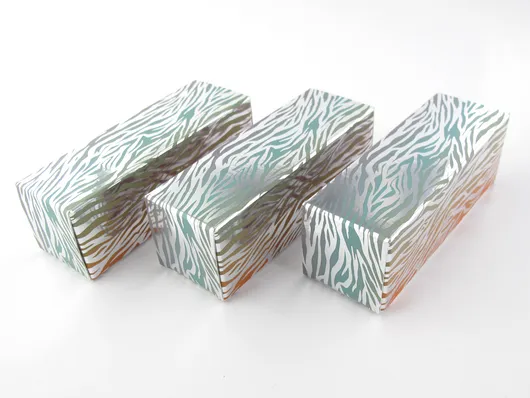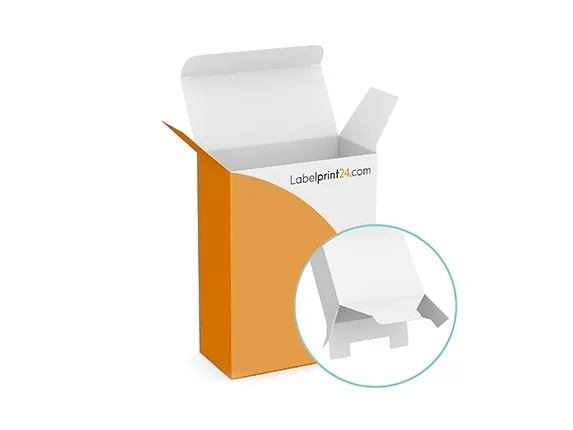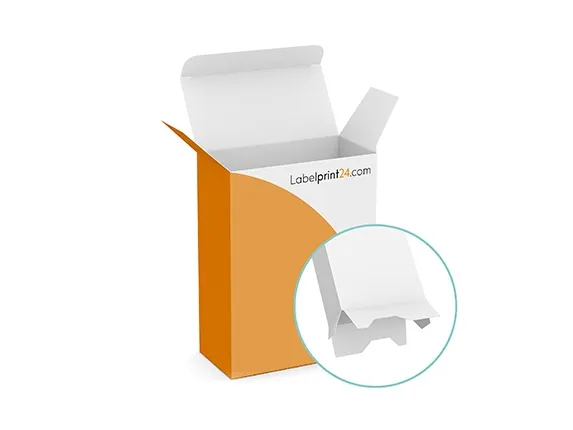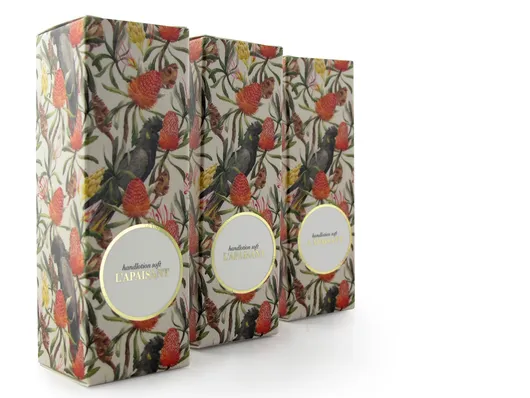Chromo duplex cardboard GD2: recycled cardboard
When ordering folding boxes from Labelpint24, you have the possibility to choose between a variety of materials in the calculator. These materials belong to different groups and have different properties. A cardboard of the category "recycled cardboard" is the GD2, a so-called chromo duplex cardboard, which consists of recycled pulp.



But what does GD2 mean? The various types of board are named according to a uniform system and are all given a corresponding abbreviated designation. The first letter describes the front side, in the case of GD2 therefore a G for "coated"; the second letter describes the raw materials used, with the D standing for duplex board made from recycled pulp with a gray reverse side. The following digit determines the weight of the coating for recycled materials, which can be a quality feature.
Most often, it is not the raw material used in the cartonboard that comes first, but its appearance and printability. GD2 board has a white front side, which is double coated. The reverse side is uncoated and has a natural, light gray coloring. The pigment coating of the front side enables a printed image with brilliant color effects. Finishes and varnishes have a higher gloss effect than on uncoated boards thanks to the white coating on the front. It is therefore possible to produce visually high-quality folding cartons with high print quality from GD2 cartonboard.

Ronan Joncour
Product consultant Folding Boxes
Whether it’s a simple box or a folding carton with an inlay – I’m your advisor for carton types, base designs, and finishing options. From cosmetics to food and technology, I’ll help you find the perfect folding carton for your industry.
"Just a carton? Folding boxes are incredibly versatile!"
I will be happy to help you personally.
Discover our printed folding boxes for corporate clients
Besides a high-quality appearance, it is important that a folding box is stable. An indicator of stability is the respective grammage and thickness of the material. The grammage is the basis weight of the cardboard and is specified in g/m². In our calculator you can choose between two grammages for GD2 cardboard. For larger folding boxes or boxes for heavier products, it is advisable to choose the 400 g/m² GD2 cardboard with a thickness of 0.59 mm. Especially for small boxes the 320 g/m² GD2 with a thickness of 0.435 mm is well suited.
The GD2 board is a so-called secondary fiber board. Secondary fiber cartons are made from waste paper, in the case of the GD2 from recycled pulp. Thanks to the materials used, they are more environmentally friendly than primary or virgin fiber cartons. The production of GD2 cartonboard is more environmentally friendly because less energy and water is used than to produce virgin fiber cartonboard. Environmental friendliness is a characteristic that is currently becoming increasingly important for consumers and manufacturers. For many customers, the characteristic of recycled packaging is a convincing argument for purchasing a product.
Packaging made of GD2 cartonboard is therefore doubly appealing to the customer: because of the attractive print and because of its environmental friendliness. For many customers, it is important that the materials used come from certified responsible forestry. To indicate this, the FSC logo can be used. The GD2 cardboard we offer has this certification, so it is recycled materials from responsible forest use.

Discover our range of labels and folding boxes.
These articles may also interest you:

GC1 - coated chromo board
The GC1 board is a so-called chromo board. The chromo board is a multi-ply board made of pulp, wood pulp or wood-free waste paper with a coated, flat surface.

The role of the folding carton in online retailing
Consumers who shop online pay close attention to product quality, freshness, deliverability, selection, and reliable service - all of which labels and folding cartons must provide.

The history of the folding box
Nowadays, it's hard to imagine a world without shipping cartons. We may take the folding box for granted today, but at the end of the 19th century it was way ahead of its time.





















